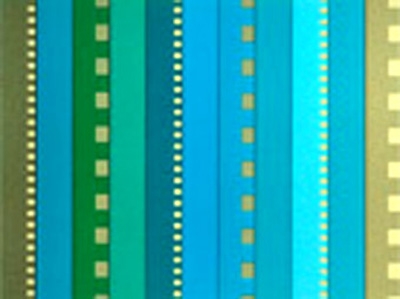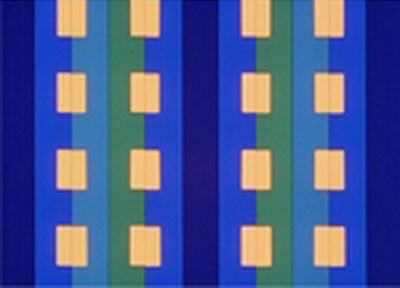

1971, Canada, 16mm, colour, sound, 7 min. 27 sec.
To make this film Norman McLaren developed novel optical techniques to compose the piano rhythms of the sound track. These he then moved in multicolor onto the picture area of the screen so that, in effect, you see what you hear. It is synchronization of image and sound in the truest sense of the word, similar to Fischinger's Ornament Sound.
I can discern 4 influences. First of all Oscar Fischinger, with his Hungarian Dance No. 5, because this film gave me the courage of my convictions. I wanted to make abstract films - not necessarily abstract films - but to compose abstract images based on music, and at that time I did not know how to go about it. At home I constructed coloured lights and moved them by hand over paper. But when I saw Oscar Fischinger's, I told myself the solution was to make abstract films. Then there was Emile Cohl. I saw Drama Among The Puppets (1908), and was struck by the purity, the simplicity of line, and the wonderful metamorphosis. I am not forgetting Alexandre Alexeieff and his Night On A Bare Mountain (1933). What gripped me was the fertile imagination, not so much technique as the creative imagination, the bold metamorphosis and the surrealist thinking. For surrealism had made a great impression on me. Finally Len Lye and his techniques of drawing directly onto the film. That is all. But I add two general influences: Pudovkin and Eisenstein.
Norman McLaren
